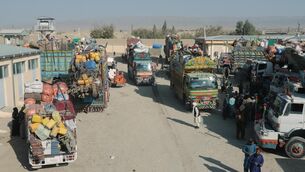Astronauts inspect Shuttle for damage
Discovery’s crew used highly sensitive cameras attached to a 15-metre boom today to carefully examine the space shuttle for any signs of damage from the previous day’s launch.
Nothing serious was reported, but it was much too early to draw any conclusions, officials said.














